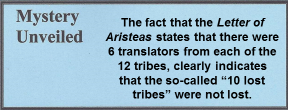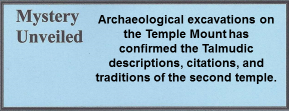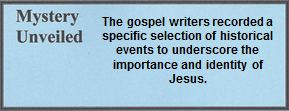02.02.20 Oral Tradition. (See Oral Law – 02.02.18 and Mishnah – 02.02.16) The Oral Tradition was in place during the entire Second Temple Period (515 B.C. – A.D. 70). The significance of the Oral Tradition increased significantly after the Maccabean Revolt. The Pharisees had just emerged as a significant religious sect and they emphasized additional rules and regulations that were intended to prevent the rise of another Antiochus IV Epiphanes as well as an eviction from their land. In the century after the destruction of the temple and deaths of many rabbis, the Oral Tradition was written and became known as the Mishnah.
Critics have maintained that in the process of orally conveying history and religion from one generation to another, changes and errors have slowly infiltrated and changed meaning of the biblical text. However, this is hardly the case.[1] The ancient Jews had an oral culture, but we who live in a modern non-oral culture have great difficulty realizing the great care that was exercised by the ancients to transmit information to the next generation. Whenever a teaching or tradition was presented, there was also an audience present to make the necessary correction. This Tradition is a unique feature of the Hebraic culture and Jesus referred to it in Matthew 15:2 and Mark 7:3, 5. The strongest point for an accurate oral transmission of the gospels is that the oral custom was in place and had functioned for many centuries previously. Since the primitive Church was essentially Jewish, it was only reasonable to expect that a new Oral Tradition carried the accounts of Jesus and the apostles until the gospels were written. Luke recorded a classic oral conveyance of information in this statement, “Just as they were handed down to us….”
Many have undertaken to compile a narrative about the events that have been fulfilled among us, 2 just as the original eyewitnesses and servants of the word handed them down to us. 3 It also seemed good to me, since I have carefully investigated everything from the very first, to write to you in an orderly sequence, most honorable Theophilus, 4so that you may know the certainty of the things about which you have been instructed.
Luke 1:1-4
Luke gathered his information from the eyewitnesses which he then recorded. Therefore, he wrote what would normally have been first generation information of the new Oral Tradition. His choice of words in verse 2, “the word handed them down to us.” clearly echoes the Oral Tradition. It reflects the accuracy of the eyewitnesses in the telling of the events to him, as “handed down,” a technical term used for oral conveyance.[2] He also wrote of events that he personally witnessed.[3]
[1]. For additional study on the accuracy of oral transmission of commentary and biblical knowledge, see Gerhardsson, Memory and Manuscript: Oral Tradition and Written Transmission in Rabbinic Judaism and Early Christianity, especially the section on Techniques of Repetition (page 163). The importance of this lies in the fact that the gospel narratives are believed to have been transmitted orally in the same manner until the gospel writers recorded them.
[2]. New International Version Study Bible Footnote on Luke 1:2.
[3]. Acts 16:10-17; 20:5 – 21:18; 27:1 – 28:16.


